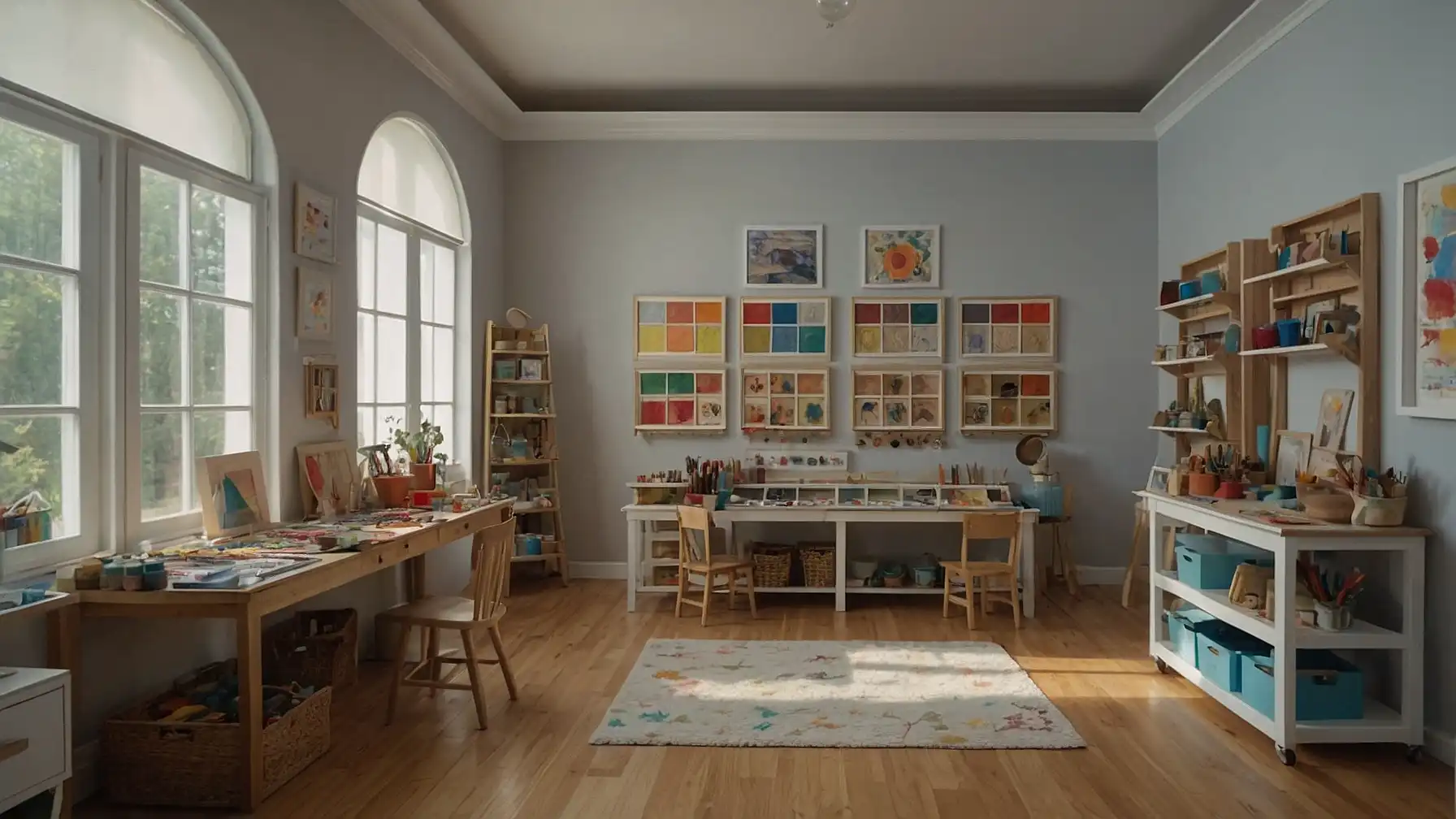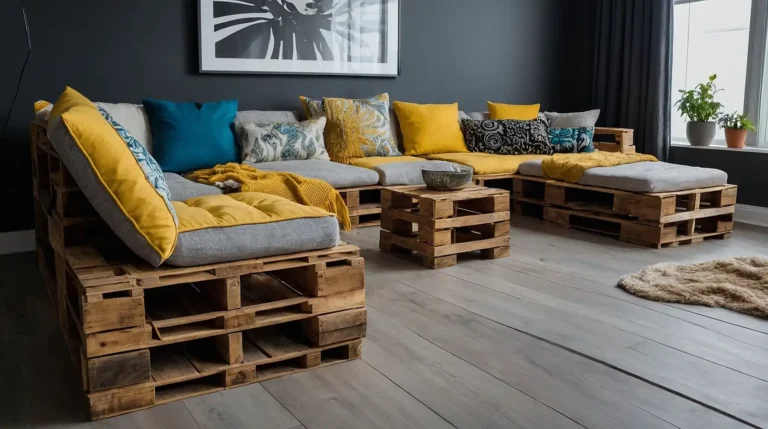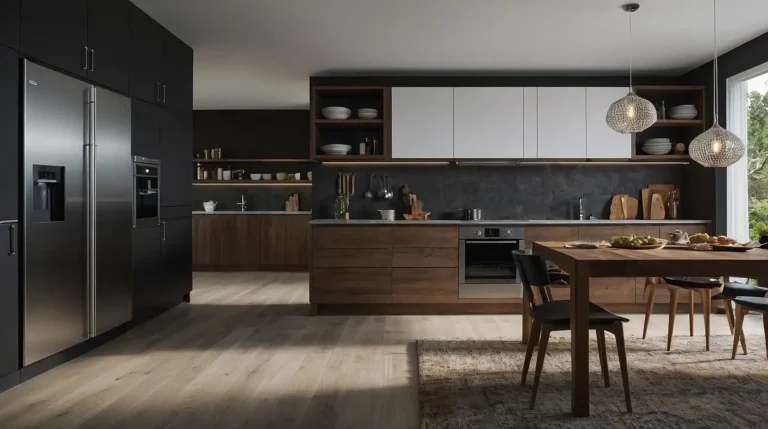27 Montessori Art Studio Tips
You’re creating more than just an art space when you design a Montessori-inspired studio.
You’re building an environment that nurtures independence and creativity.
The Montessori approach honors children’s natural artistic instincts. It provides freedom within a carefully prepared environment.
These 27 tips will help you create a space where children can explore, create, and develop confidence through hands-on artistic experiences.
1: Create Child-Height Work Surfaces
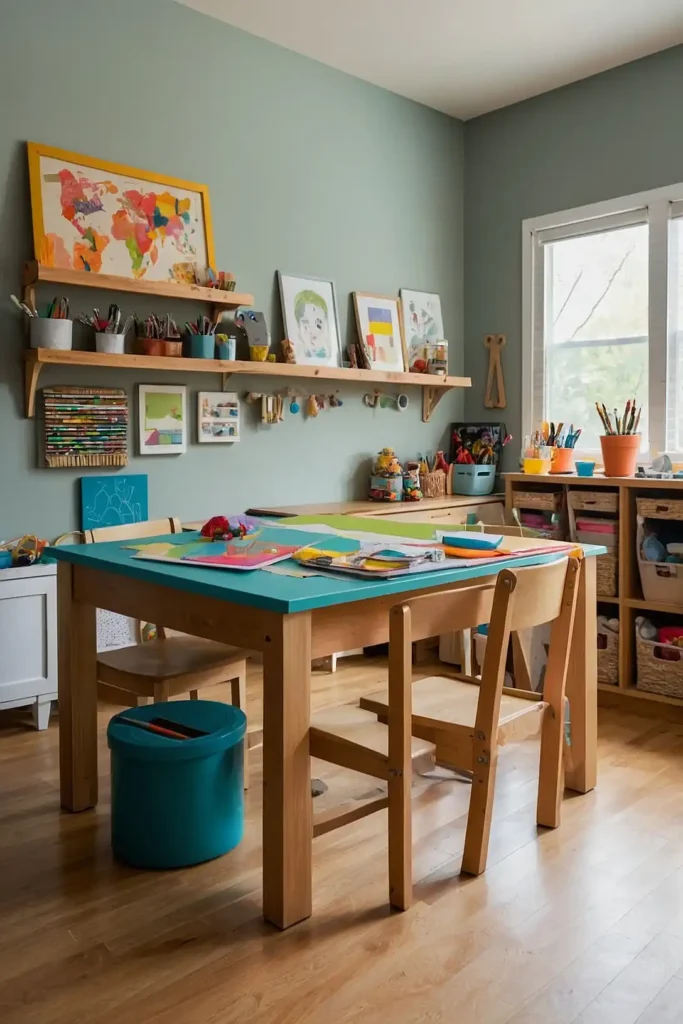
You’ll empower independence by providing tables and easels at your child’s natural working height. They should access materials without adult assistance.
Low surfaces encourage proper posture and engagement. Children feel confident when they can manage their workspace independently.
Adjustable table legs work well for growing children. Consider floor cushions for ground-level activities that promote different perspectives.
2: Use Natural Materials Whenever Possible

You can connect children to nature through wooden brushes, cotton canvases, and stone palettes. Natural materials engage the senses more fully.
These materials feel authentic and inspire deeper exploration. They also demonstrate respect for the environment and natural world.
Avoid plastic when possible. Choose bamboo, wood, and metal tools that will last longer and feel substantial in small hands.
3: Organize Materials in Clear Containers
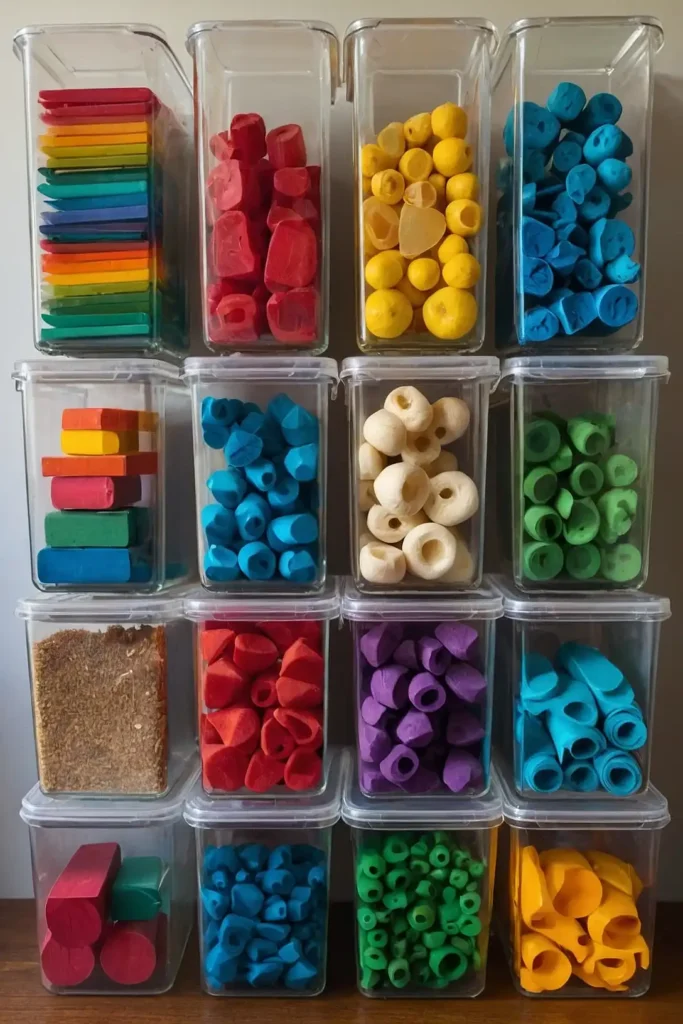
You’ll support visual learning by storing supplies in transparent jars and boxes. Children can quickly identify and select what they need.
Clear storage eliminates guesswork and reduces frustration. It also helps children learn to categorize and organize their environment.
Label containers with both words and pictures. This supports early reading skills while maintaining accessibility for all children.
4: Establish a Logical Material Sequence

You can guide natural progression by arranging activities from simple to complex. Start with basic materials before introducing advanced techniques.
This builds confidence and skills systematically. Children can choose appropriate challenges based on their current abilities and interests.
Place beginner materials at eye level. Store more advanced supplies slightly higher to indicate progression and achievement levels.
5: Provide Real Artist Tools

You’ll show respect for children’s capabilities by offering genuine brushes, scissors, and drawing tools. Child-sized doesn’t mean toy-quality.
Real tools produce better results and teach proper technique. They also demonstrate trust in children’s ability to handle responsibility.
Choose quality materials that will withstand regular use. Sharp scissors and good brushes actually make tasks easier and safer.
6: Design Self-Contained Activity Trays

You can promote independence through complete project setups on individual trays. Include all necessary materials for specific activities.
This eliminates the need for children to gather supplies from multiple locations. It also teaches project planning and organization.
Rotate trays regularly to maintain interest. Include step-by-step visual instructions when introducing new techniques or materials.
7: Create a Beauty-Filled Environment

You’ll inspire creativity by surrounding children with beautiful, carefully chosen artwork and natural objects. Beauty elevates the entire experience.
Display fresh flowers, interesting shells, or smooth stones. These elements feed the soul and spark artistic inspiration.
Choose a calm, neutral color palette for walls. This allows children’s artwork to stand out while creating a peaceful atmosphere.
8: Establish Clear Boundaries and Rules
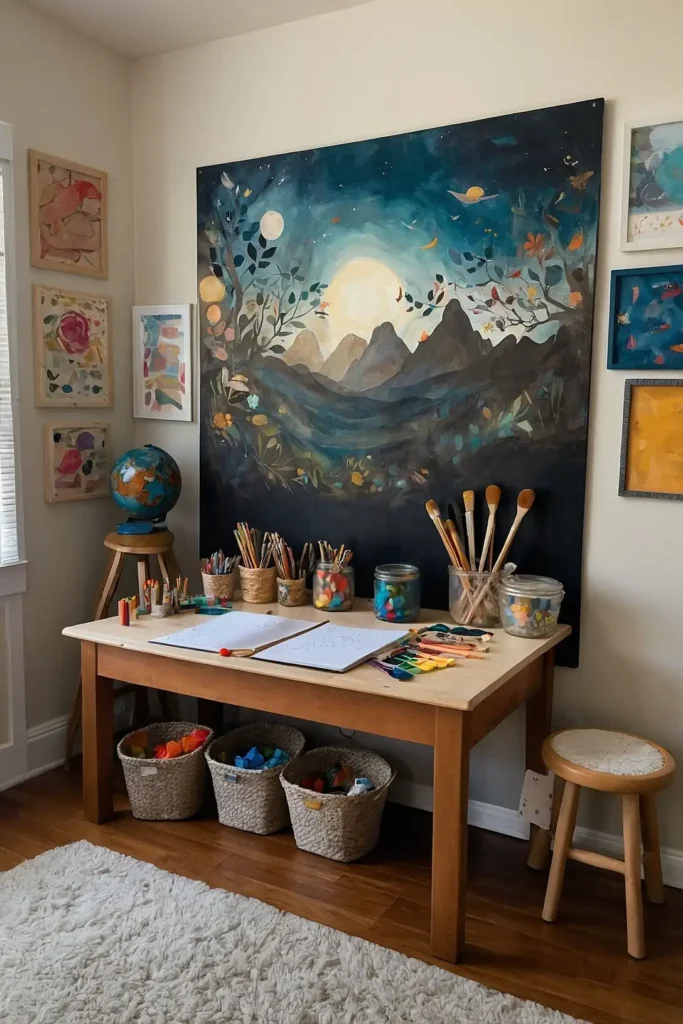
You can provide security through consistent expectations about material use and studio behavior. Clear boundaries actually increase freedom.
Post simple, positive rules with pictures. Focus on care for materials, respect for others’ work, and studio maintenance.
Practice rules together until they become automatic. This creates a predictable environment where creativity can flourish safely.
9: Include Mixed-Age Opportunities
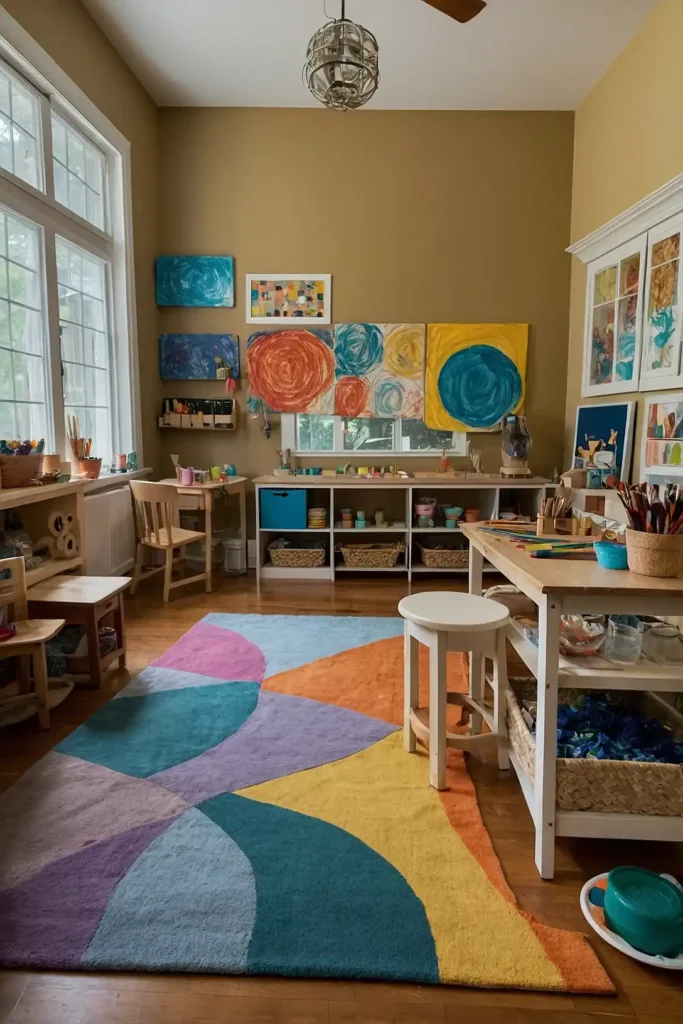
You’ll enhance learning by allowing younger and older children to work together occasionally. Peer teaching benefits both age groups.
Older children reinforce their knowledge by helping younger ones.
Younger children learn advanced techniques through observation and guidance.
Supervise these interactions carefully. Create specific projects designed for collaborative work between different age levels.
10: Provide Adequate Natural Lighting
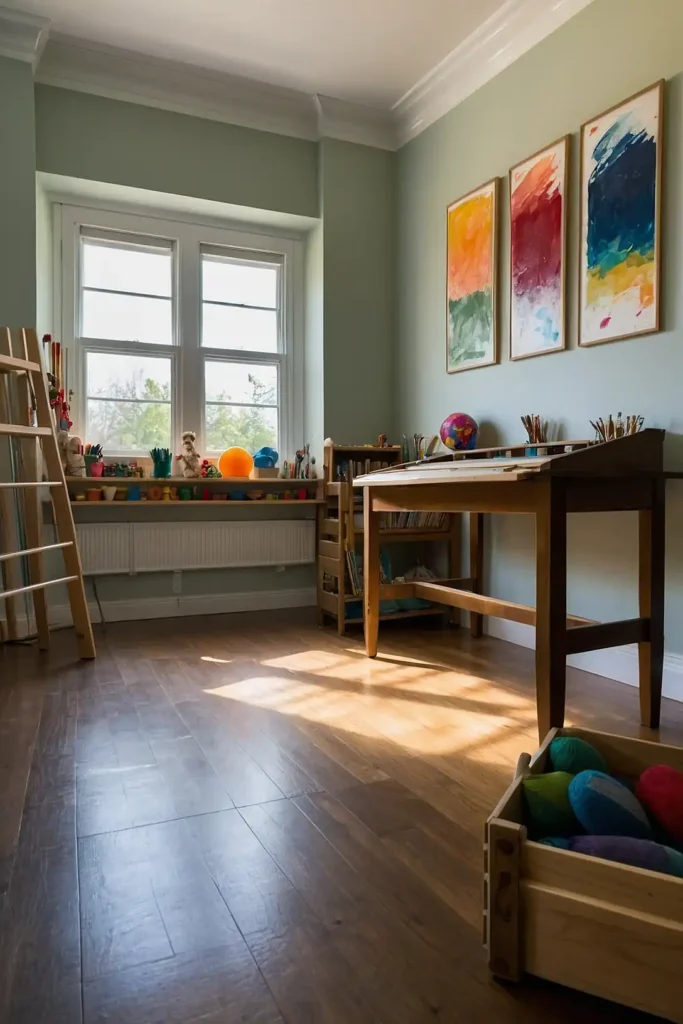
You can support accurate color perception by positioning work areas near windows. Natural light reveals true colors and reduces eye strain.
Supplement with full-spectrum bulbs when necessary. Good lighting makes detailed work easier and more enjoyable for children.
Consider the light direction throughout the day. Adjust workspace positions to avoid glare while maximizing natural illumination benefits.
11: Set Up Water Access Stations
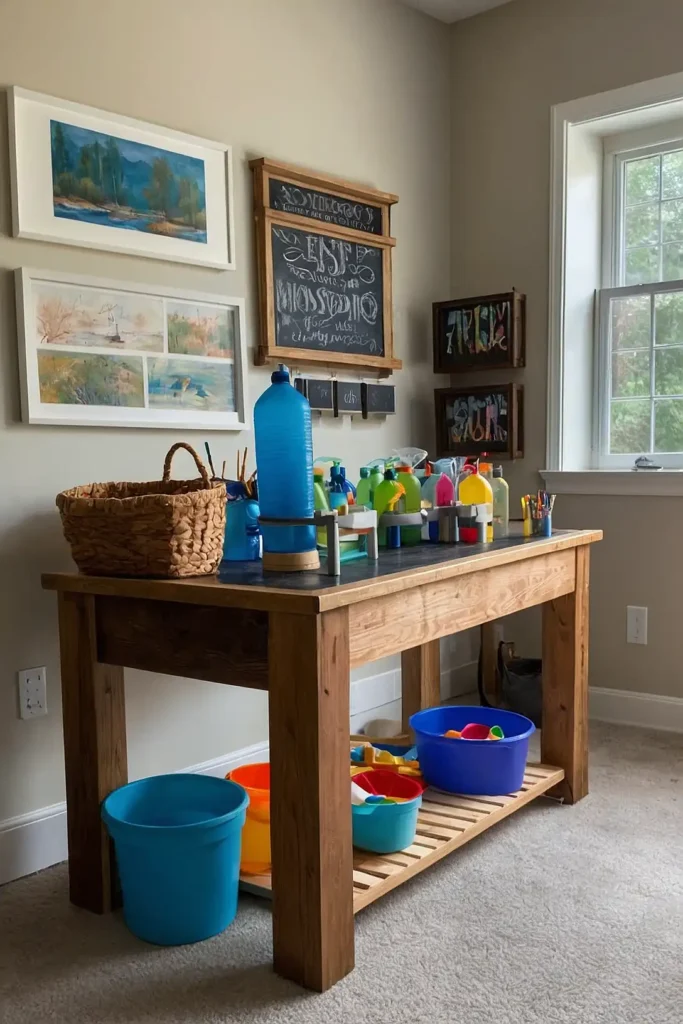
You’ll promote independence by creating easily accessible water sources for brush cleaning and paint mixing. Include child-height sinks or basins.
Provide small pitchers, sponges, and towels at each station. This enables children to maintain their tools without adult assistance.
Teach proper water conservation techniques. Show children how to use minimal water while keeping brushes and palettes clean.
12: Create Dedicated Drying and Display Areas
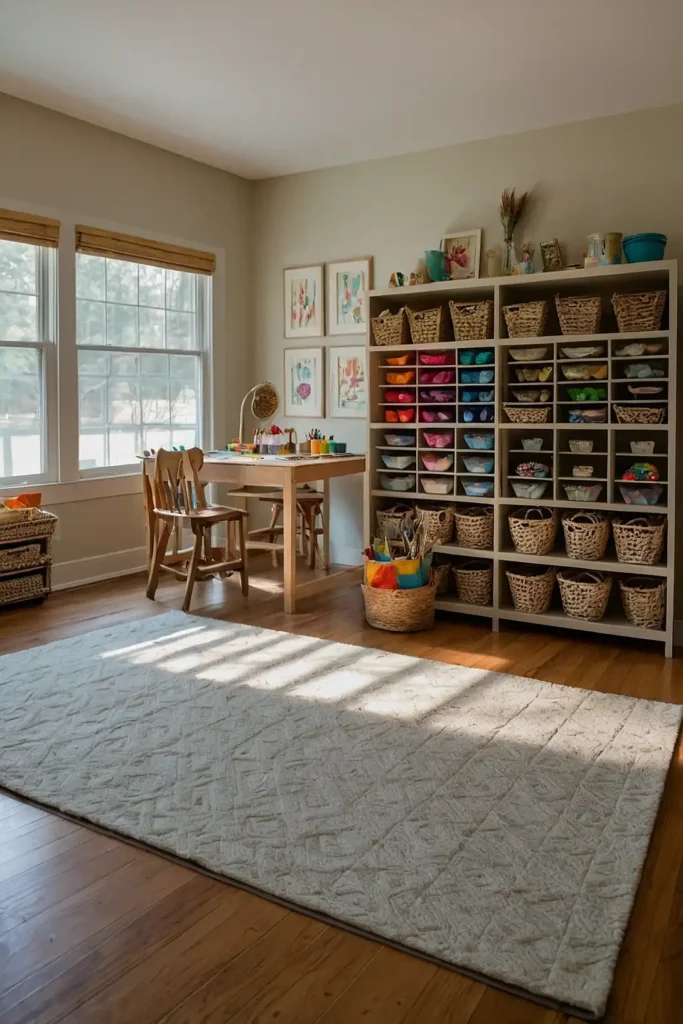
You can teach patience and planning by providing specific spaces for wet artwork. Install drying racks or designated hanging areas.
This prevents smudging and teaches children to think ahead. It also shows respect for their creative work and efforts.
Rotate displayed pieces regularly. Create a system where children can choose which works to showcase in the main display area.
13: Offer Process-Focused Activities

You’ll support authentic learning by emphasizing exploration over final products. Provide materials that encourage experimentation and discovery.
Focus praise on effort, technique, and problem-solving. Avoid emphasizing end results or comparing children’s work to adult expectations.
Include activities like color mixing, texture exploration, and material testing. These build foundational skills without pressure for specific outcomes.
14: Include Cultural Art Studies

You can broaden perspectives by introducing artwork from diverse cultures and time periods. Provide high-quality reproductions and art books.
This connects children to human creativity throughout history. It also develops appreciation for different artistic traditions and techniques.
Choose age-appropriate materials that represent various cultures respectfully. Include local artists and contemporary works alongside classical pieces.
15: Maintain an Orderly Environment

You’ll reduce stress by keeping materials organized and spaces tidy. Children concentrate better in calm, ordered environments.
Teach children to clean as they work. Provide child-sized cleaning tools and establish routines for maintaining studio spaces.
Model organization and care for materials. Children learn through observation and will naturally adopt these important life skills.
16: Provide Quiet Spaces for Reflection

You can support deep thinking by creating peaceful corners for observation and planning. Include comfortable seating and inspiring elements.
These spaces allow children to process their experiences and plan future projects. They also provide breaks from active creation.
Include sketchbooks or journals for recording ideas. This teaches children to value their thoughts and creative planning processes.
17: Use Seasonal and Natural Inspirations
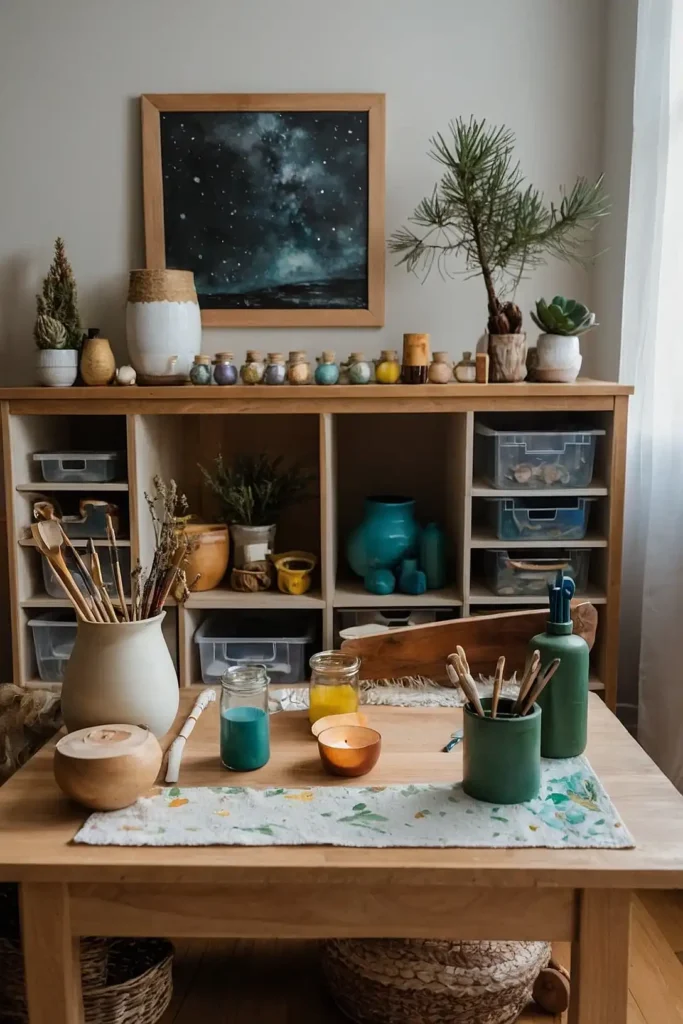
You’ll connect art to life by incorporating natural elements and seasonal changes. Provide fresh flowers, leaves, and interesting natural objects.
This keeps the studio environment dynamic and inspiring. Children learn to observe and appreciate natural beauty around them.
Take regular nature walks to collect materials. This combines outdoor exploration with artistic inspiration and material gathering.
18: Establish Personal Art Portfolios

You can document growth by maintaining individual collections of each child’s work. This shows progress over time and builds confidence.
Include photos of three-dimensional works and large projects. Write brief notes about techniques used and child’s comments.
Review portfolios together regularly. Help children notice their own improvement and developing skills through concrete evidence.
19: Include Practical Life Art Skills
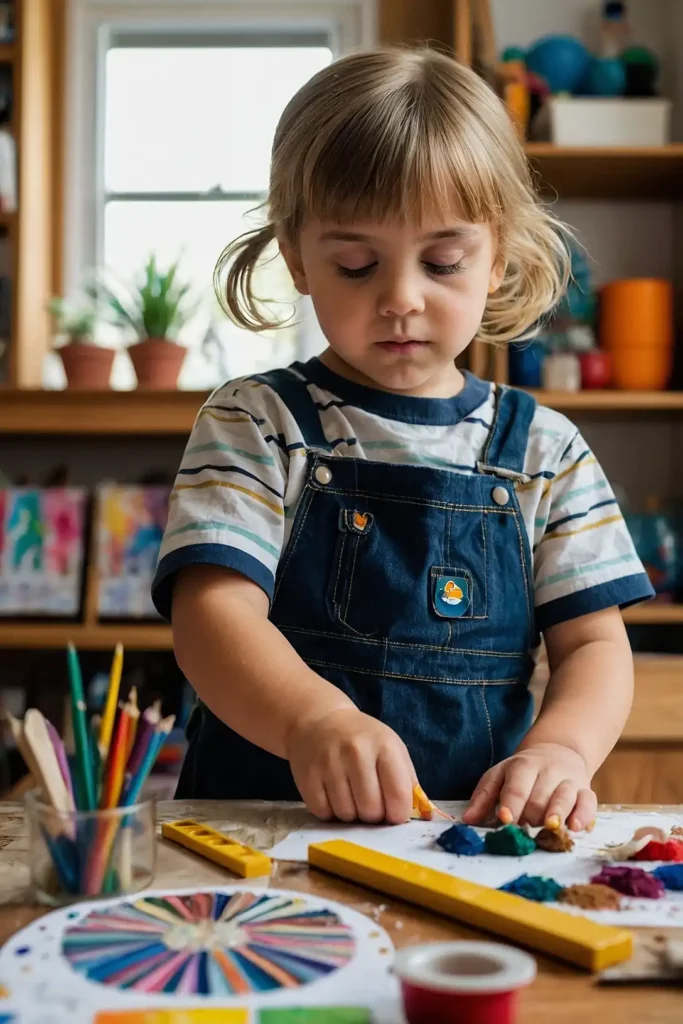
You’ll integrate real-world applications by teaching brush care, paint mixing, and tool maintenance. These skills transfer beyond art.
Show children how to wash brushes properly, organize materials, and repair simple tools. This builds responsibility and independence.
Include activities like picture framing, mat cutting, and simple bookbinding. These practical skills enhance children’s sense of capability.
20: Provide Movement and Large Motor Opportunities
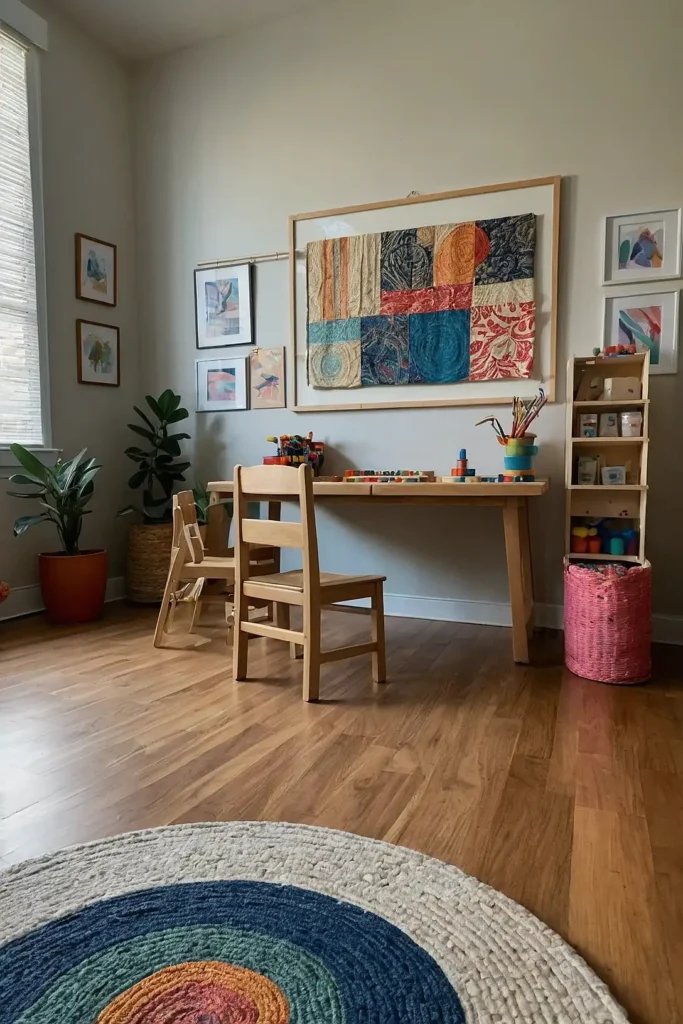
You can support whole-body learning through large-scale projects and standing work surfaces. Art shouldn’t be limited to seated activities.
Include wall murals, floor painting, and sculpture activities. These engage different muscle groups and creative approaches.
Allow children to move freely around projects. This supports their natural learning style and reduces physical tension.
21: Create Interest Areas by Medium

You’ll support focused exploration by organizing materials into distinct areas. Group painting supplies, drawing materials, and sculpture tools separately.
This helps children develop expertise in specific mediums. It also makes material selection and cleanup more efficient.
Rotate featured mediums regularly. This maintains novelty while allowing deep exploration of different artistic techniques and materials.
22: Include Sensory Exploration Materials
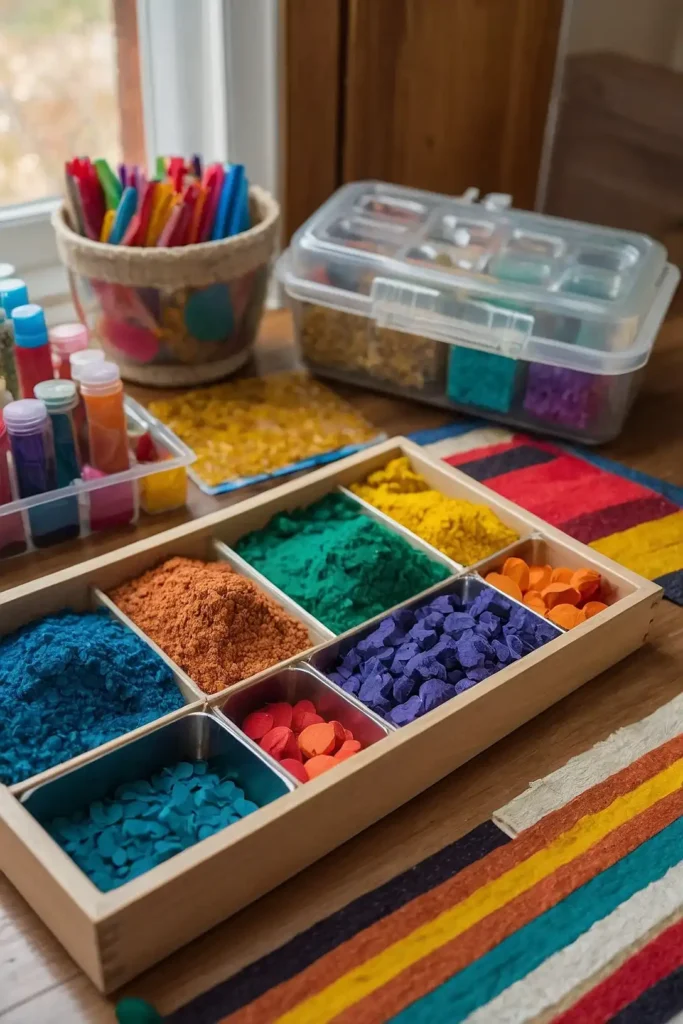
You can engage multiple learning pathways through textured papers, fabric scraps, and varied painting surfaces. Touch enhances creativity.
Provide sandpaper, velvet, corrugated cardboard, and other interesting textures. These materials inspire different artistic approaches and techniques.
Include scented materials like cinnamon sticks or lavender. Multi-sensory experiences create richer memories and deeper engagement.
23: Establish Collaborative Project Spaces

You’ll teach cooperation by designating areas for group artwork. Large tables or floor spaces work well for shared projects.
This builds social skills while creating art. Children learn to negotiate, compromise, and appreciate others’ contributions.
Provide projects specifically designed for multiple participants.
Group murals, quilts, or sculpture gardens work particularly well for collaboration.
24: Include Technology Thoughtfully
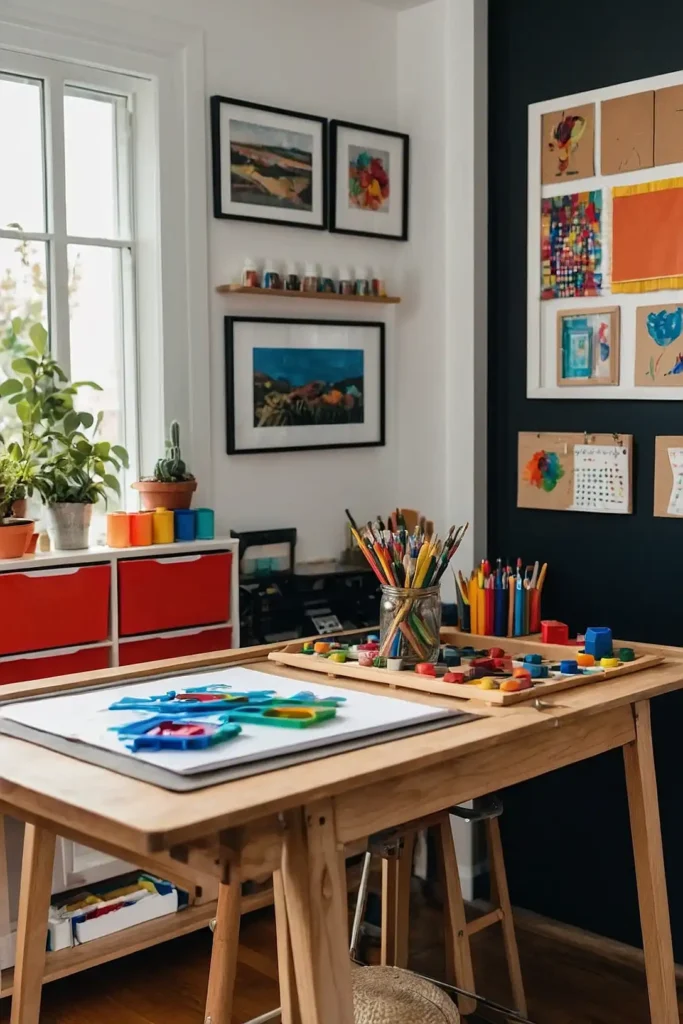
You can enhance traditional art with carefully chosen digital tools. Tablets for research or cameras for documentation serve specific purposes.
Technology should supplement, not replace, hands-on creation. Use it to explore art history, document processes, or research techniques.
Limit screen time and maintain focus on physical materials. The goal is supporting creativity, not entertaining children.
25: Create Connection to Community Artists
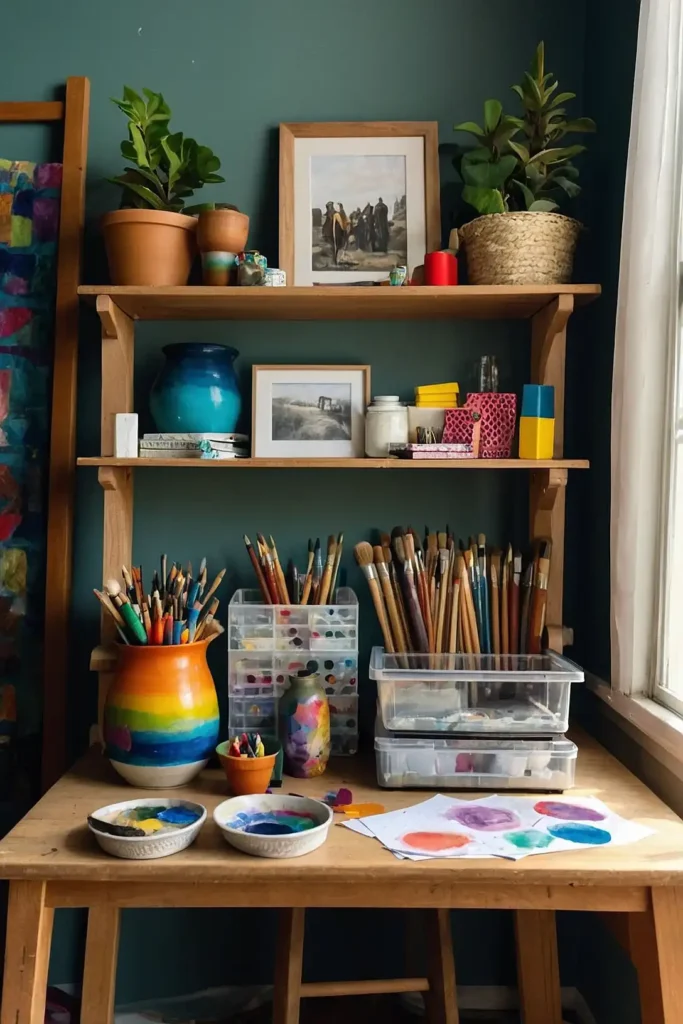
You’ll expand horizons by connecting children with local artists and art organizations. Arrange visits or invite artists to the studio.
This shows children that art is a living, breathing part of their community. It also provides inspiration and real-world connections.
Display information about local galleries and art events. Help children see themselves as part of the broader artistic community.
26: Provide Choice in Project Direction

You can honor individual interests by offering multiple options within structured activities. Children choose their own artistic direction.
This respects individual creativity while providing necessary guidance. It also builds decision-making skills and personal investment in outcomes.
Avoid overly prescriptive projects. Instead, provide techniques and materials, then let children apply them to personal interests.
27: Celebrate Process and Progress
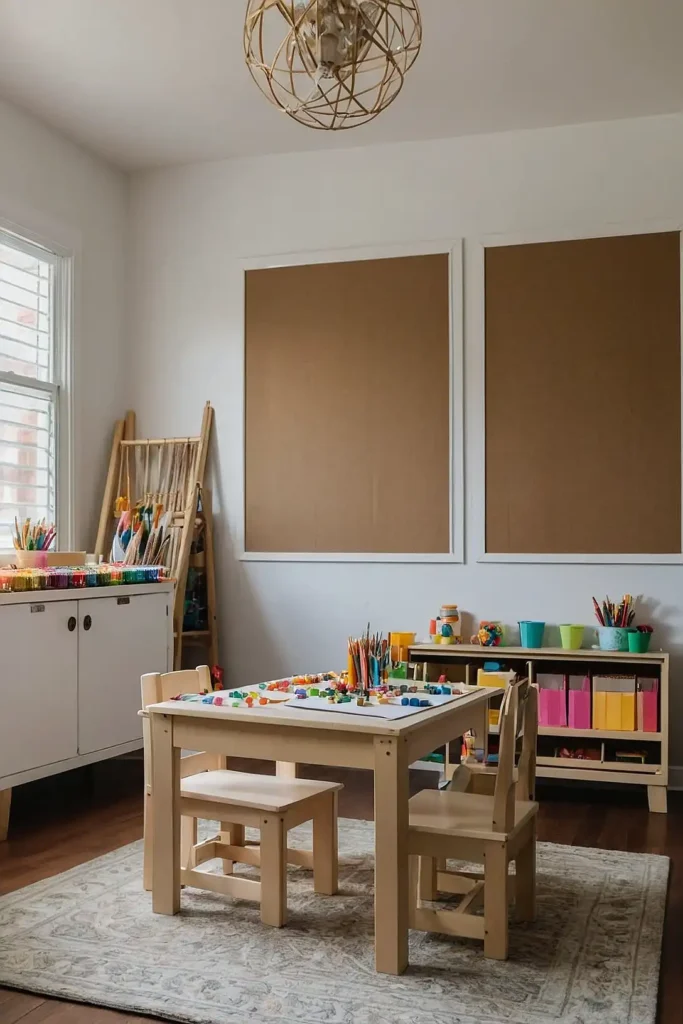
You’ll build confidence by acknowledging effort, improvement, and creative problem-solving. Focus on the journey rather than destinations.
Take photos of children working, not just finished products. This shows that the creative process itself has value.
Create displays that highlight technique development and artistic exploration. Help children see their growth over time.
Conclusion
Your Montessori art studio becomes a place where children develop independence, creativity, and confidence through respectful, child-centered experiences.

